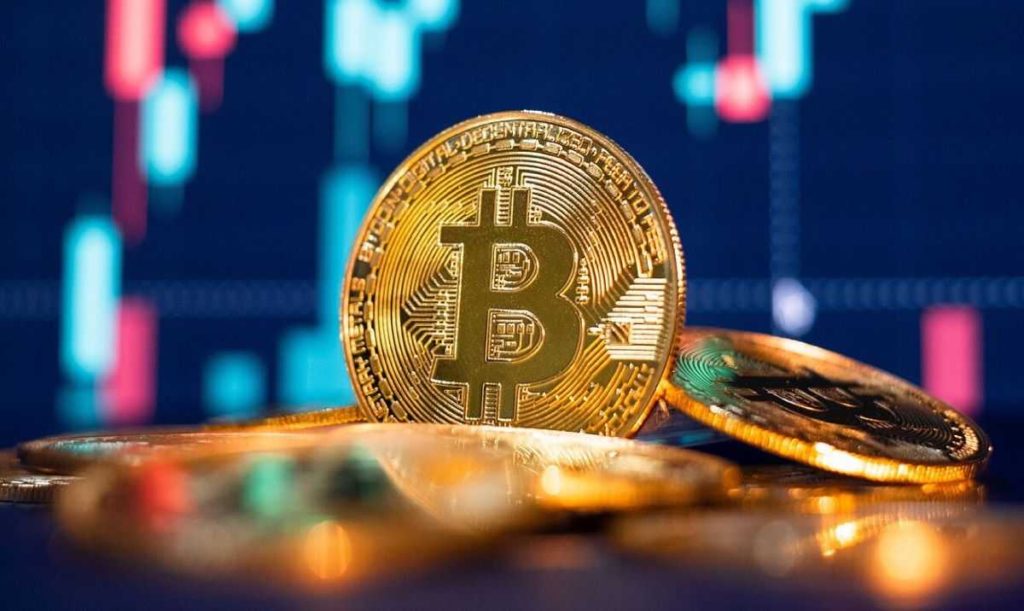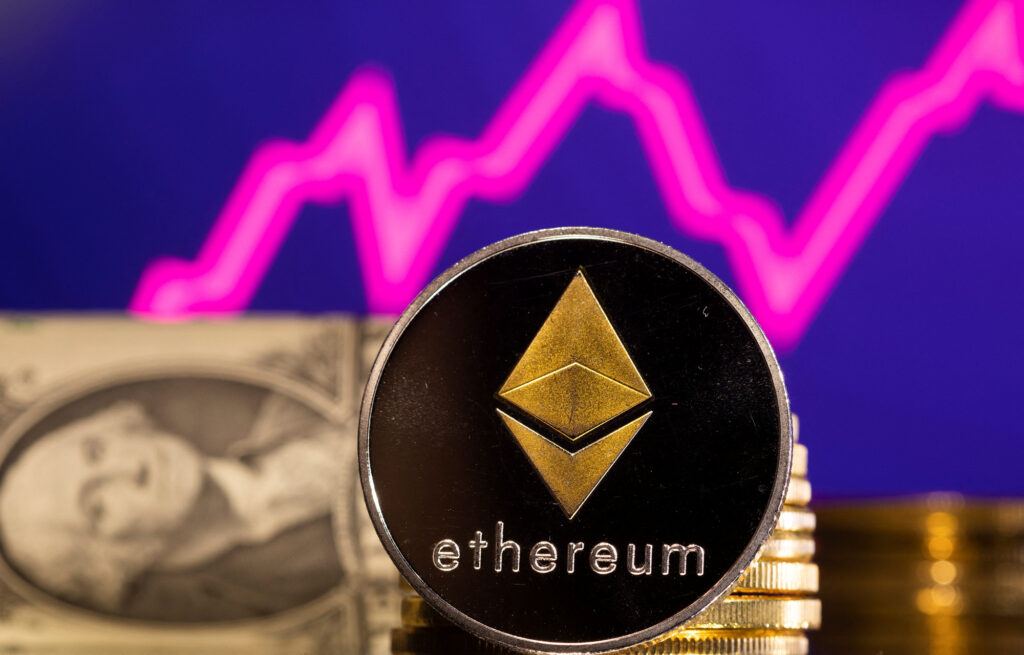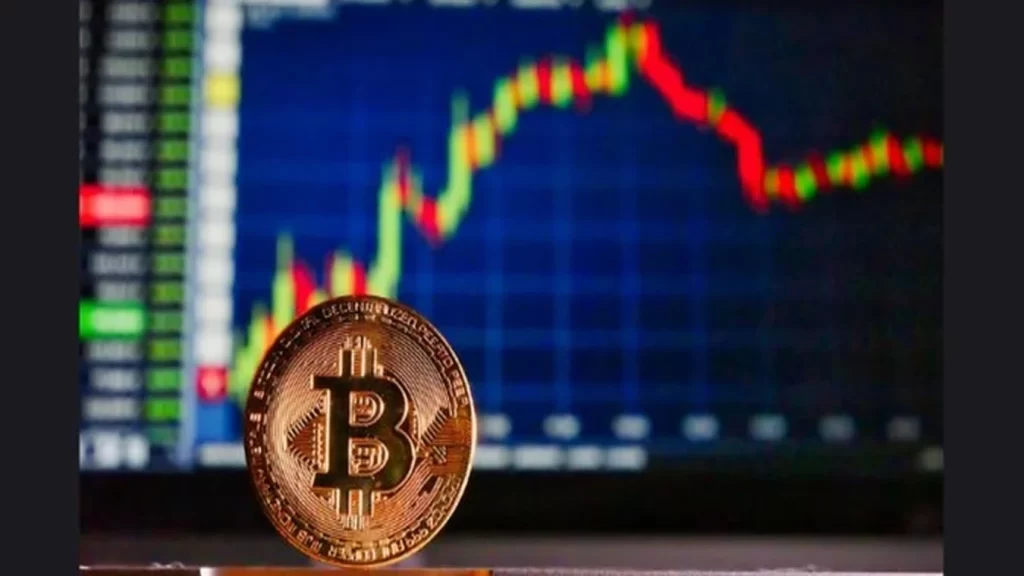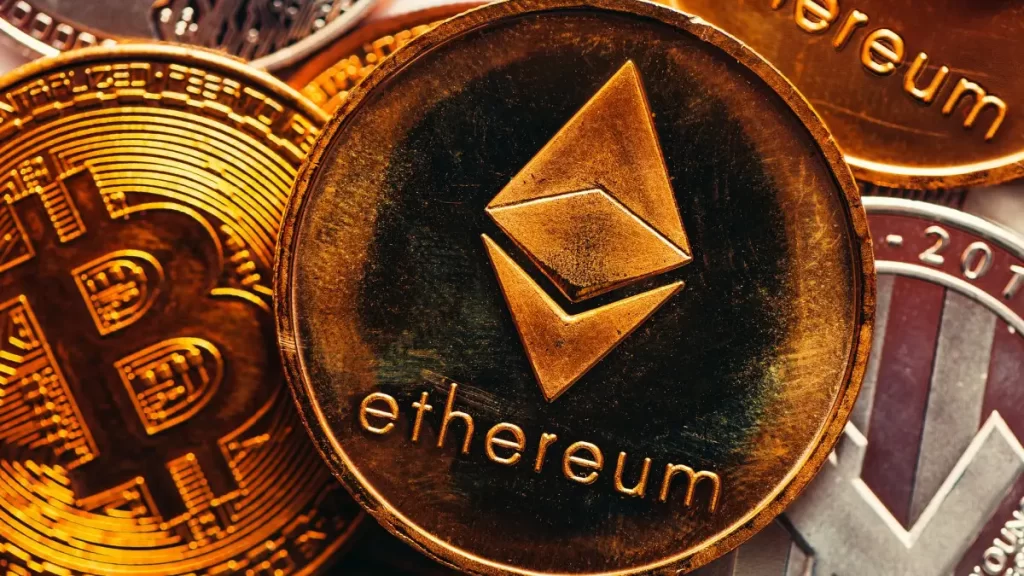Bitcoin took a rain check on a sudden upswing at the Wall Street open on February 9th as 24-hour gains reached 6%.
Data from Cointelegraph Markets Pro and TradingView illustrated BTC’s price trajectory retracting after hitting $47,700.
The move, fuelled by spot markets, barely paused overnight as consecutive Asia and United States trading sessions posed little challenge for bulls.
At the time of writing, attention focused on $47,400 as volatility persisted, with Bitcoin still assessing its highest levels since late 2021.
The week’s performance also marked Bitcoin’s strongest since last October.
“Strong bounce from the midrange, attacking $48,000 again, as expected,” popular trader Jelle wrote in part of his latest analysis on X (formerly Twitter).
“Last hurdle for Bitcoin to overcome, not much standing in the way of new all-time highs once it breaks.”
Jelle additionally described the current price range as a “moment of truth.”
Fellow trader Skew, meanwhile, cautioned that the entire day would likely remain “pretty volatile.”
More reserved about the immediate outlook was Keith Alan, CEO and co-founder of trading resource Material Indicators, who noted significant sell-side liquidity just below the two-year range highs and $50,000.
“Something to consider before you FOMO into BTC at this level.
There is ~£175M in BTC ask liquidity (aka resistance) stacked between here and $50k, and only ~£50M in bid support down to $43k,” part of his own X post read.
READ MORE: FCC Outlaws AI-Generated Robocalls in US Following Surge of Fraudulent Voice Messages
Alan nonetheless suggested that a weekly close above $45,000 would benefit bulls, with whales easily able to drive the market higher should $50,000 be breached — to the detriment of short positions.
“If you are considering a short, be prepared to get squeezed. IF whales manage to push above $50k there is currently very little friction up to $55k,” he concluded.
An accompanying chart illustrated buy and sell liquidity and cumulative volume delta, or CVD, on the BTC/USDT order book of the largest global exchange, Binance.
The day’s movements among the newly launched U.S. spot Bitcoin exchange-traded funds (ETFs) continued an encouraging narrative for bulls.
The Grayscale Bitcoin Trust (GBTC) saw outflows as anticipated, while the previous day’s cumulative netflows among the remaining nine ETFs were the third-largest since their Jan.
11 launch, according to data uploaded to X by Bloomberg Intelligence ETF analyst James Seyffart.
As Cointelegraph reported, the ETFs from BlackRock and Fidelity Investments recorded the most successful first month’s trading of any ETF product in the past thirty years.
Like clockwork every four years, Bitcoin’s mysterious creator Satoshi Nakamoto programmed the world’s dominant cryptocurrency to go through a dramatic supply squeeze known as the halving (or “halvening” if you want to sound really crypto-native). As if controlled by the mystical gods of blockchain themselves, the amount of shiny new bitcoin entering circulation gets abruptly chopped in half. poof Just like that.
And so as 2024 continues ticking by, cryptocurrency project teams across the land find themselves facing yet another BTC halving event – the third in Bitcoin’s relatively brief but wild history. If past halvings are any indication, the impending slash to supply should rocket BTC’s price into a new all time high – or at least, that’s what 84% of investors think will happen.
As such, the halving presents an opportunity for crypto projects to make sure their unique brands stand out – before the Bitcoin mothership takes off without them.
Refresh Your Project’s Branding and Messaging
Like an ageing rock band embarking on a reunion tour, many a crypto project kicking around since the last halving bear signs of showing their age – tired branding, recycled messaging, questionable colour schemes. Before stepping back in the spotlight for their halving encore, these projects would be wise to nip and tuck their aesthetic elements as well as craft marketing narratives that better resonate in today’s Web3 landscape.
No one wants to listen to musical acts that refuse to release new songs or at least go back and remaster the old ones. Savvy crypto projects understand the importance of polishing up their unique value propositions and tying them to the latest crypto developments (i.e. the halving) rather than relying on dated materials that fail to excite. Out with the old, in with the bold.
Step Up Your PR Game
In the frequently scam-ridden world of crypto, establishing trust and credibility remains a towering obstacle for projects seeking adoption. And with the terabytes of information overload numbing people’s minds in today’s digital era, cutting through the noise to stand out presents its own unique challenges.
Crypto projects are thus wise to step up their PR game as the next halving chapter approaches. While cryptonative journalists and podcasters love the tech, they crave the story and personality behind the project even more. Founder interviews, guest articles in niche publications, and unique angles that highlight new integrations or developments are the types of inbound marketing plays that catch reporter eyes.
And don’t forget press releases blasted out through crypto press release distribution services – those can help plant your credibility-establishing messages in front of the right audiences at the right time. This is a vital strategy for long term success in the volatile world of Web3.
Ramp Up Community Engagement Efforts
Unless they fancy themselves fading into irrelevance, crypto project teams would be immensely unwise not to tap into and re-energise their grassroots communities as the 2024 halving approaches. Those communities represent their most valuable mechanism for long-term growth amidst the inevitable adoption hype halvings fuel.
Projects should host frequent AMA sessions, run creative social contests and giveaways utilising their native tokens, and provide other incentives to strengthen contributors’ attachment. These cultivation moves build loyalty while organically surfacing ideas for desired features and user experience upgrades directly from users themselves.
Smart crypto platforms even graduate especially talented community members into more formal roles — admins, subreddit mods and brand ambassadors who can spread the word. Converting standout supporters into leadership positions in this way activates the perfect candidates to manage the next waves of adopters Bitcoin’s proposed price explosions will soon attract into the community.
Increase Exposure Through Advertising and Cross-Promotions
As the next Bitcoin halving approaches, creating hype and visibility for crypto projects will be key. This is the time to focus on widening your exposure through smart advertising and partnerships.
Consider splurging a little on native ads in popular crypto publications – that targeted audience needs to hear about you. Work out some affiliate deals with leading crypto YouTubers and podcasters in the hope that their influential sway will rub off on you. And don’t forget about cross-promotions with complementary crypto projects. A little ambassador and creator camaraderie can go a long way.
And once again, remember to double down on building your social media and community channels. That’s where curious followers will come knocking when Bitcoin hits fever pitch. Getting as many eyes on your crypto project as possible needs to take top priority for every marketer’s game plan leading up to the halving. When hype builds, you wanna be on their radar.
Polish Your Whitepaper
A crypto project’s whitepaper operates much like a band’s discography – its comprehensive documentation of the technical vision, product roadmap, tokenomics, and other key details. As the crypto crowd swells heading into the next halving-powered hype cycle, projects would be remiss not to polish up those vital historical records.
That means integrating new developments, ensuring branding and messaging sync with the papers’ contents, and potentially even creating supplementary “greatest hits” materials like one-pagers, lite papers, or help docs for simplified consumption. Outdated whitepapers risk losing relevance as interest resurges, so a little spring cleaning of the core literature can freshen things up as interest and scrutiny compounds from both existing and new community members.
Final Word
The impending 2024 halving signals a pivotal moment for crypto projects to shine a spotlight on their unique value propositions before Bitcoin once again dominates attention. By taking proactive steps to refresh branding, boost community engagement, expand visibility channels, and polish underlying literature, projects can ride the rising interest into the halving event on positive momentum.
The compounding awareness should lead to stronger communities, accelerated adoption and partnerships, and greater resilience to weather any crypto winter that may follow Bitcoin’s price peak.
Ether‘s value surged by 10% in the initial nine days of February, surpassing the $2,450 mark for the first time in three weeks.
This upturn correlated with the wider bullish trend in the cryptocurrency market and was notably influenced by the macroeconomic landscape.
While the reasons underpinning Ether’s surge are evident, there’s mounting optimism among investors as deposits on the Ethereum network rise.
Yet, the question lingers: is this momentum potent enough for a sustained ascent beyond $2,800?
Weak economic indicators from China and concerning fiscal debt trends in the United States are fostering an environment favourable for risk-on assets.
US Federal Reserve Chair Jerome Powell highlighted the necessity for a more sustainable approach to public debt.
Neil Irwin, of Axios Macro, predicts a decrease in the Fed’s policy interest rate due to projections of escalating US debt service costs.
Meanwhile, China’s manufacturing activity saw a decline for the fourth straight month, prompting the central bank to implement measures supporting the real estate market.
This economic backdrop led to investors divesting fixed-income assets, causing the two-year US Treasury yield to rise to its highest level in two months.
Despite these developments, the S&P 500 index hit a record high above $5,000 on February 9, suggesting a lack of immediate concern regarding an economic downturn.
However, the US fiscal debt trajectory, as highlighted by Powell, creates a conducive setting for scarce alternative assets like Ether.
READ MORE: UK Police Unit Thwarts 43 Fraudulent Web Domains Amid Rising Cybercrime Concerns
While cryptocurrencies face competition from the stock market for risk-on capital, they also present an opportunity for alternative investments.
Stocks such as Nvidia and Amazon, trading at significantly high earnings multiples, contribute to this narrative.
Assessing the sustainability of Ether’s February gains requires scrutiny of on-chain activity within the Ethereum network.
Smart contract deposits, particularly on the EigenLayer liquid staking solution, surged to an 11-month high, indicating growing demand for ETH.
Moreover, Ethereum’s dominance in transaction fees underscores its robust demand compared to competitors like Tron and BNB Chain.
Beyond its current applications, optimism among Ether investors stems from the potential of a new nonfungible token format, ERC-404, which could boost sector activity.
Additionally, the impending Dencun network upgrade scheduled for March 13 promises reduced transaction costs for layer-2 rollups.
With fixed-income investors exploring alternatives and the Ethereum network’s continuous expansion, Ether investors remain undaunted by recent gains or resistance at $2,650, indicating a resilient price trajectory compared to previous tests in January.
On 8th February, spot Bitcoin exchange-traded funds (ETFs) encountered their third-largest surge, amounting to £403 million.
The substantial inflow occurred despite over £100 million exiting the Grayscale Bitcoin Trust (GBTC).
The total influx into spot Bitcoin ETFs has surpassed £2.1 billion since their introduction on 11th January, indicating robust demand for BTC in the market.
The third-largest inflow day for spot BTC ETFs coincided with BTC’s price surpassing $46,000 to mark a fresh multiweek high, just £2,000 shy of new yearly highs.
Leading the ETF flow chart is BlackRock iShares Bitcoin Trust (IBIT) with an inflow of £204 million, followed by Fidelity with £128 million, ARK 21Shares with £86 million, and Bitwise with £60 million.
The remaining seven ETFs collectively witnessed £27 million in inflows, while GBTC recorded another £102 million in outflows.
IBIT also clinched the distinction of becoming the first ETF to surpass GBTC’s daily trading volume.
Nonetheless, the total trading volume of all 11 spot Bitcoin ETFs dipped below £1 billion for the first time since their inception.
READ MORE: US Cryptocurrency Mining Leaders Raise Concerns Over Emergency Energy Survey
Bloomberg senior analyst Eric Balchunas underscored BlackRock’s overtaking of Grayscale in trading volume as a significant achievement, noting that it typically takes about five to 10 years for a new fund to surpass the category’s “liquidity king.”
Market analysts interpret the positive flow into Bitcoin ETFs as indicative of investors’ appetite and burgeoning demand.
The net flows into the ETFs imply that approximately £403 million, or roughly 8,698 BTC, was withdrawn from the market and transferred into cold storage.
Spot Bitcoin ETFs received approval from the United States Securities and Exchange Commission for listing on 10th January and commenced trading the following day.
Since their launch, spot BTC ETFs have witnessed record trading volumes, with over a billion dollars traded daily, indicating robust investor interest.
The forthcoming Bitcoin halving is less than 70 days away, which will halve the market supply of BTC from 6.25 BTC per block to 3.125 BTC.
With mounting demand from institutional investors, the dwindling supply could propel BTC to reach new market highs.
AI-generated voices utilised in unwarranted or automated robocalls have now been officially deemed illegal in the United States following a recent decision by the Federal Communications Commission (FCC).
In a statement dated February 8, the agency declared, “Today the Federal Communications Commission announced the unanimous adoption of a Declaratory Ruling that recognises calls made with AI-generated voices are ‘artificial’ under the Telephone Consumer Protection Act (TCPA).”
“This would give State Attorneys General across the country new tools to go after bad actors behind these nefarious robocalls.”
The FCC’s prohibition comes shortly after residents of New Hampshire received fraudulent voice messages mimicking U.S. President Joe Biden, advising them against participating in the state’s primary election.
Robocall scams are already prohibited under the TCPA — a U.S. law overseeing telemarketing.
The recent ruling will also criminalise the use of “voice cloning technology” employed in these scams. The regulation will take immediate effect, stated the FCC.
“Bad actors are using AI-generated voices in unsolicited robocalls to extort vulnerable family members, imitate celebrities, and misinform voters.
We’re putting the fraudsters behind these robocalls on notice,” stated FCC chair Jessica Rosenworcel.
The FCC initially suggested the prohibition of AI robocalls under the TCPA on January 31, which is a 1991 law regulating automated political and marketing calls made without the recipient’s consent.
The TCPA’s primary objective is to shield consumers from unwanted and intrusive communications or “junk calls” and to limit telemarketing calls, the use of automatic telephone dialling systems, and artificial or pre-recorded voice messages.
READ MORE: US Cryptocurrency Mining Leaders Raise Concerns Over Emergency Energy Survey
FCC regulations also mandate telemarketers to acquire written consent from consumers before initiating robocalls. The ruling will now ensure that AI-generated voices in calls are also held to the same standards, London Insider reported.
The FCC highlighted in its recent statement that AI-supported calls have surged in recent years and cautioned that the technology now has the potential to befuddle consumers with misinformation by replicating the voices of celebrities, political figures, and close family members.
Furthermore, while law enforcement has been able to address the repercussions of an unwanted AI-voice-generated robocall — such as the scam or fraud they aim to perpetrate, the new ruling will empower law enforcement to pursue scammers solely for using AI to generate the voice in robocalls.
Meanwhile, the alleged perpetrator behind the Biden robocalls in mid-January has been traced back to a Texas-based firm named Life Corporation and an individual named Walter Monk.
The Election Law Unit issued a cease-and-desist order to Life Corporation for contravening the 2022 New Hampshire Revised Statutes Title LXIII on bribes, intimidation, and suppression.
The order necessitates immediate compliance, and the unit reserves the right to take further enforcement actions based on prior conduct.
Ethereum’s Dencun upgrade, which introduces “proto-danksharding,” has successfully completed its final testing phase via the Holesky testnet and is now awaiting scheduling for its mainnet deployment.
Data indicates that the Dencun upgrade was initiated on Holesky at approximately 11:35 am UTC on February 7, with Nethermind promptly sharing the news on X.
This upgrade is widely anticipated to reduce transaction costs on Ethereum layer-2s.
Dencun will notably introduce proto-danksharding through Ethereum Improvement Proposal-4844 (EIP-4844).
The key feature of EIP-4844 is the introduction of “blobs,” which will enable Ethereum nodes to temporarily store and access large amounts of off-chain data.
Philippe Schommers, head of infrastructure at Gnosis, previously explained to Cointelegraph that the implementation of Dencun on the Ethereum mainnet could potentially lower rollup costs by up to 10 times.
A decision regarding the mainnet deployment date of Dencun is expected to be made on February 8 during an AllCoreDevs call, while Ethereum enthusiast Anthony Sassano stated on February 7 that “all signs point to early-mid March.”
READ MORE: Ethereum Foundation Explores Strategies to Optimize Blockchain for Rollup-Centric Roadmap
Combining the Cancun and Deneb upgrades, Dencun is poised to be the most significant upgrade of Ethereum since the Shapella upgrade last April, which marked the first instance of unstaking Ether (ETH) from the Beacon Chain since its launch on December 1, 2020.
Cancun primarily focuses on network scalability at the execution layer, with EIP-4844 being the central component.
Additionally, EIP-1153, EIP-4788, and EIP-6780 are included in the upgrade.
Deneb, on the other hand, concentrates on enhancing Ethereum’s consensus layer.
Before being tested on Holesky, Dencun underwent deployment on the Goerli and Sepolia testnets on January 17 and January 30, respectively.
However, the deployment of Dencun to Goerli encountered a four-hour delay due to a bug that hindered the testnet from completing the upgrade.
“The network faced syncing issues with nodes due to a bug in Prysm, Ethereum’s proof-of-stake client,” explained Nebojsa Urosevic, a founder of the Ethereum development platform Tenderly, to Cointelegraph at the time.
“This incident underscores the importance of having multiple clients and the necessity of testnets,” Urosevic added.
Effective January 1st, 2024, a significant change will take effect for businesses operating in the United States. The Corporate Transparency Act (CTA) now requires both domestic and foreign companies to report their beneficial owners to the Financial Crimes Enforcement Network (FinCEN). This move aims to increase transparency and combat financial crimes such as money laundering and terrorist financing.
Shining a Light on Beneficial Owners
The CTA aims to combat financial crime by identifying the individuals who ultimately control companies. These “beneficial owners” are those who hold at least 25% of the company’s equity or exert substantial control through other means. Prior to the CTA, such information often remained shrouded in secrecy, making it easier for criminals to launder money or finance illicit activities through shell companies.
Reporting Requirements and Deadlines
Companies existing before January 1st, 2024 have a grace period until January 1st, 2025 to submit their initial reports. Newly formed companies have 90 days after registration to comply. The reports require detailed information about the company itself, including its legal and trade names, address, and tax ID number.
For beneficial owners, companies must disclose names, dates of birth, addresses, government-issued ID numbers, and even a photo of the ID. This level of detail aims to create a clear picture of who truly wields power behind the scenes.
Failure to Comply Comes at a Cost
The CTA isn’t without teeth. Individuals who willfully violate the reporting requirements can face hefty fines of up to $500 per day for the duration of the non-compliance. Additionally, criminal penalties including imprisonment and even larger fines are possible. Violations can include failing to file a report altogether, submitting false information, or neglecting to update information when ownership structures change.
Keeping Up-to-Date Crucial
Companies are also responsible for updating their reports within 30 days of any major changes to their ownership structure or company information. This ensures FinCEN maintains an accurate and up-to-date database of beneficial owners.
Transparency: A Step Towards Financial Security
The Corporate Transparency Act represents a significant step forward in the fight against financial crime. By shedding light on the true owners of companies, law enforcement will have a more powerful tool to identify and disrupt criminal activities. Businesses that operate legally have nothing to fear, and the benefits of increased transparency can help foster trust and stability within the American financial system.
To provide further insights into this change, we consulted Claudemir Ramos, a widely recognized accountant specializing in both Brazilian and American regulations. As the Owner and Founder of CR Accounting & Consulting LLC, Claudemir is a renowned professional within the field who provides insights from current tax law. Regarding this matter, he states:
“As specified in the Corporate Transparency Law, a person who willfully violates the BOI’s reporting requirements may be subject to civil penalties of up to US$ 500 for each day the violation persists. That person may also be subject to criminal sanctions of up to two years in prison and a fine of up to US$ 10,000. Possible violations include willfully failing to file a beneficial ownership information report, willfully filing false beneficial ownership information, or willfully failing to correct or update previously reported beneficial ownership information.”
When investigating financial crimes, law enforcement often needs to trace the flow of money. The CTA provides a valuable tool for investigators by allowing them to quickly identify the beneficial owners of companies involved in suspicious transactions. This can lead to faster and more effective investigations, ultimately helping to recover stolen funds and hold criminals accountable.
According to the specialist Claudemir Ramos:
“By requiring disclosure of beneficial owners, the goal of the CTA is to make it more difficult to hide behind layers of bureaucracy. Law enforcement will have a clearer picture of who is truly behind a company, making it easier to identify and investigate suspicious activity.”
It’s important to note that the CTA is just one piece of the puzzle in combating financial crimes. Other regulations and law enforcement efforts are still needed. However, by increasing transparency in corporate ownership, the CTA provides a valuable tool for law enforcement and can significantly hinder the ability of criminals to operate in the shadows.
For more information on Beneficial Ownership Reporting and how to comply with the CTA, visit the FinCEN website at https://boiefiling.fincen.gov/.









